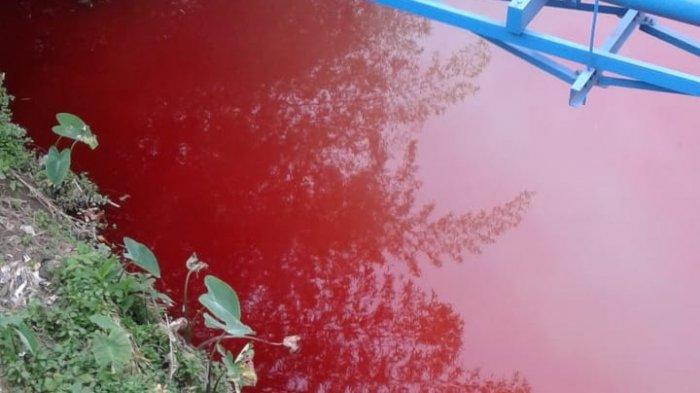The rapid development of industry in Indonesia is causing pressure on the environment and potentially disrupting environmental sustainability. Several types of industries in Indonesia, such as traditional textile and batik industry, produce large amounts of dye waste. The waste will cause environmental pollution because the dye waste is carcinogenic, toxic, and mutagenic when it is exposed directly to living things.
Methylene blue (MB) is one of the synthetic dyes that is often used in the process of making batik cloth or paperboard. Liquid waste containing MB discharged into water can cause water pollution. Water polluted by dye waste is also very dangerous when it is used by humans for daily needs. Some chemical compounds are toxic, and it can cause various diseases such as cancer, malfunctioning organs, and even death.
Surabaya is one of the cities whose water are not spared from organic matter. Organic matter pollution needs to be handled at the source so that it does not cause problems. Some technologies that can be used to treat color waste are adsorption, coagulation, electrolysis, and other methods. However, they have some disadvantage as they produce more toxic final product in greater amount. Moreover, the technologies require costly and difficult maintenance.
Phytotechnology is one of the biotechnologies that can be used to treat dye waste. In principle, phytotechnology utilizes plants as mediating agents to convert pollutants into biomass which can be utilized further. One type of plants that can process dye waste is duckweed. It is easily found in waters, and the duckweed plants are also known to be able to reduce the content of organic matter and color in wastewater at certain levels.
The results showed that MB removal by duckweed was strongly influenced by the contact time of duckweed with MB. The percentage of MB allowance by duckweed was 0% at 0 hours and increased to 4.56; 6.33; 35.58; 42.05; 48.62; and 80.56% at 0.5; 1; 2; 3; 4; 5; 6; and 24 hours respectively. The remaining MB concentration was 50 mg / L at 0 hours and decreased to 47.72; 44.29; 32,32; 32.21; 28.97; 25.69; 22.92; and 9.72 at 0.5; 1; 2; 3; 4; 5; 6; and 24 hours respectively. Based on the above results, it is known that the longer the incubation time in plants, the higher the contact time between MB molecule and the plant surface.
In the floating wetland system, rhizosphere in plants has a very important role in the removal of pollutants. The main mechanisms of phytoremediation are phyto-uptake, phyto-stimulation, rhizodegradation, phyto-extraction, phyto-degradation, and phyto-volatilization. Three of the mechanisms ( phyto-uptake, phyto-stimulation, rhizodegradation ) occur in the rhizosphere. During the process, pollutants are absorbed by plants through absorption mechanism to the root; this is the main reason why the root length must reach the bottom of the reactor. Plants also secrete some chemical compounds known as exudates to stimulate the root bacterial community to degrade (phyto-stimulation).
Exudates can also carry out direct degradation if the plant can release a degrading enzyme (rhizodegradation). The adsorbed compound then accumulates in plant cells regardless of the type of pollutant and the ability of plants to carry out phyto-extraction. Although only accumulated, some compounds also go into the internal enzymatic reactions of plants and are converted into compounds that are useful for plant metabolism or become less toxic compounds (phyto-degradation). Products from the degradation process will be evaporated by plants into the atmosphere (phyto-volatilization).
The use of aquatic plants as a phytoremediation agent of dying agents is considered an environmentally friendly technology. Color phytoremediation using aquatic plants has received attention as an alternative technology due to low operating costs, environmentally friendly, non-toxic by-products, and low amount of sludge production. This finding is limited to one type of dye and one type of aquatic plant. Thus, further studies on different wastewater, combinations of aquatic plants, and longer treatment periods are needed. This finding will be very helpful for the industry and introduce alternative biotechnology to treat colour-contaminated wastewater using plants (phytoremediation).
Author: Muhammad Fauzul Imron, S.T., M.T.
Details of research available at:
https://www.sciencedirect.com/science/article/pii/S2405844019358669
Muhammad FauzulImron, Setyo BudiKurniawan, AgoesSoegianto, Febri EkoWahyudianto. 2019. Phytoremediation of methylene blue using duckweed (Lemna minor). Heliyon, 5(8): e02206. https://doi.org/10.1016/j.heliyon.2019.e02206





